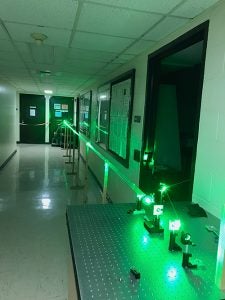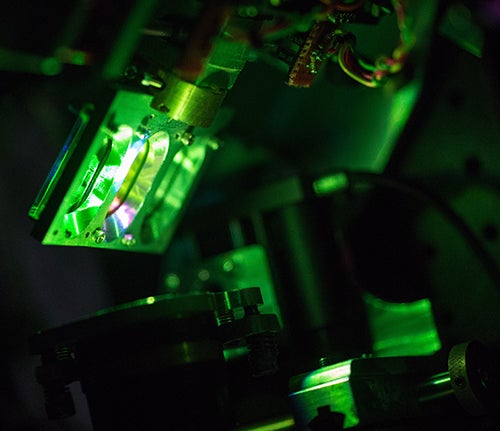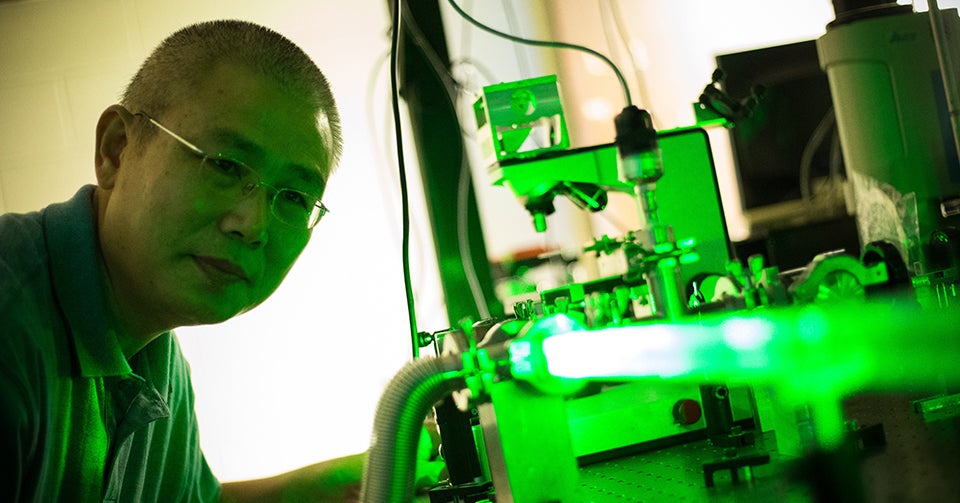TRACTOR BEAM
Professor uses laser for record-breaking particle pull
East Carolina University physics professor Dr. Yong-Qing Li and students in his lab have successfully pulled — not pushed — a particle for 10 meters, a distance 10 times greater than earlier experiments.
“The normal way of thinking is the laser will push the particle away due to the laser’s oscillation or the pressure,” Li said. “But what we’re doing here is … the particle will be pulled toward the laser beam.”

To try for a 10-meter distance, the experiment had to be set up in the hallway. (Contributed photo)
The idea of pulling particles with a laser, rather than pushing them, opens up new theoretical possibilities, Li said. If it can be achieved over longer distances, particles from space could be pulled in and captured for analysis. It might even be possible to lift particles from the surface of a planet without a landing craft.
The experiment relies on the principle of photophoresis, in which small, suspended particles migrate when illuminated by an intense beam of light. In Li’s laser lab, the particle is inside a glass tube with slightly reduced air pressure.
“It’s a little lower than our atmospheric pressure,” he said, the equivalent of 10-20 kilometers above sea level. “In our air pressure we are able to see pulling but it’s not very stable. We would need to increase the laser power to pull a particle at normal atmospheric pressure.”
The particle absorbs energy from the laser and becomes hotter than the surrounding molecules, and collisions with those molecules change the momentum of the particle.
“This force could be forward or backward depending on the size, shape and properties of the particle,” Li said.
In 2015, he and his students were able to demonstrate the pulling of a particle over a 1-meter distance, the longest such experiment in the world. Recently, the distance was increased by an order of magnitude (10 times the distance), which required moving the experiment into the hallway outside Li’s lab in the Howell Science Complex.
“Dr. Li broke the record that he previously set when he increased this distance by several orders of magnitude, from the microscopic scale to the macroscopic, pulling a particle for approximately one meter,” said physics chair Dr. Jeff Shinpaugh.

In the lab, a particle can be pulled up to 1 meter using a laser.
“The hallway was cordoned off during nonbusiness hours and no students were sacrificed during the experiment,” he joked.
Glass tubing was connected together to achieve the 10-meter distance, and the experiment was a success. Li is confident that particles can be pulled even further, but the available space is the limiting factor.
“This technology may open up a wide range of applications, but we don’t know yet,” Li said.
